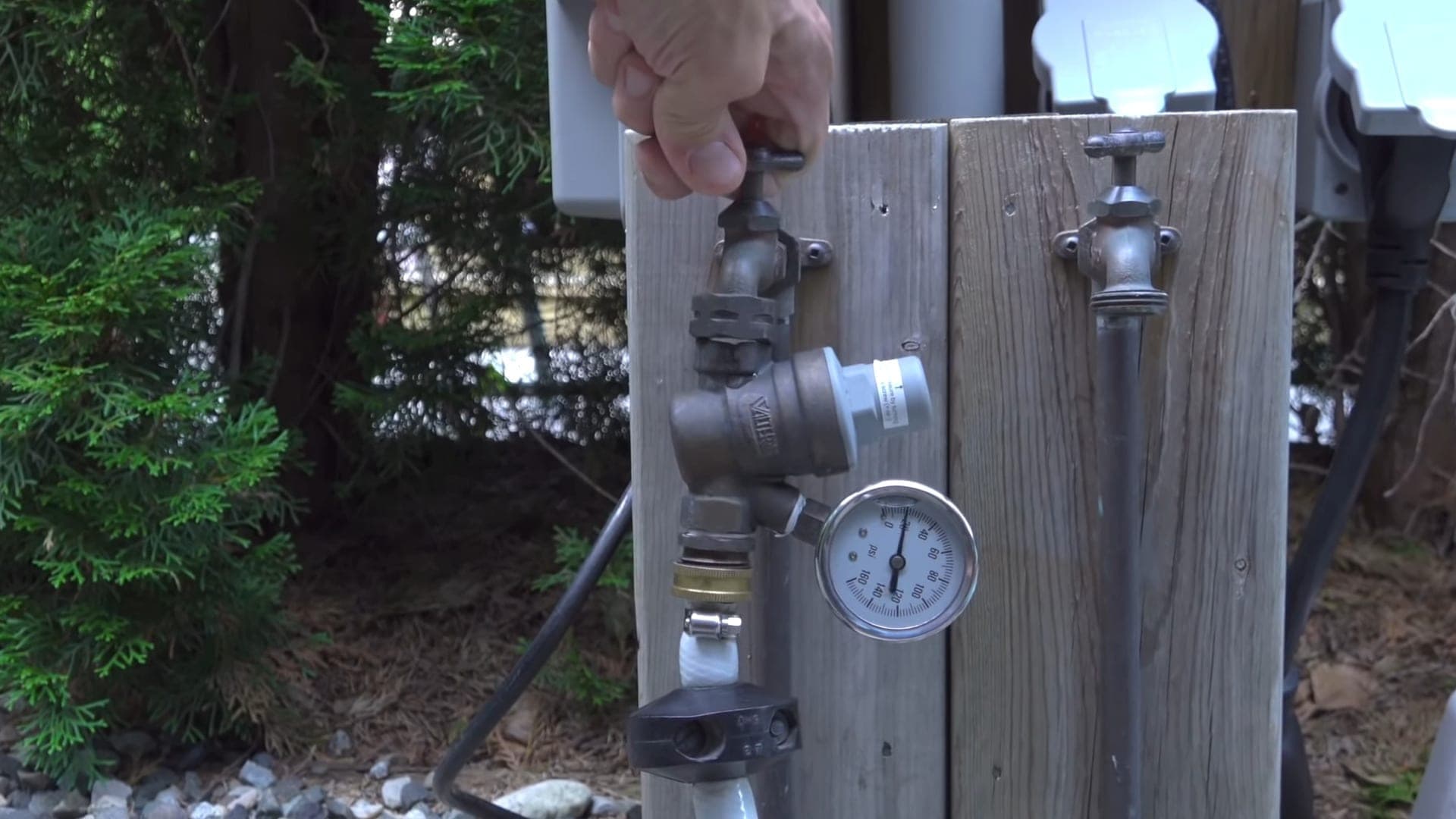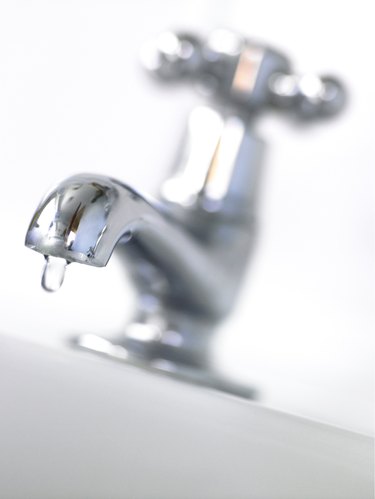What are your opinions about 9 Reasons for Low Water Pressure in Your House?

Low water stress in your house can be an aggravating problem, influencing everything from showering to washing meals. If you're experiencing weak water circulation, there are numerous feasible causes and services to explore. In this overview, we'll talk about typical factors for low water pressure and sensible steps to address the problem efficiently.
Intro to Low Tide Pressure
Low tide stress occurs when the circulation of water from your taps, showers, and various other components is weaker than common. This can make everyday jobs a lot more tough and less effective. Recognizing the reasons for low tide stress is critical to finding the best remedy.
Usual Root Causes Of Low Water Pressure
Pipe Obstructions
In time, pipelines can come to be clogged with mineral deposits, debris, or particles, limiting the flow of water. This is a common problem in older homes with galvanized steel pipes.
Rust
Deterioration within pipelines can lead to leaks and decreased water stress. Corrosion buildup can restrict water circulation, especially in aging plumbing systems.
Faulty Stress Regulators
Pressure regulatory authorities are in charge of preserving regular water stress in your home. If they malfunction, it can result in low water pressure or irregular circulation throughout your home.
Local Water Issues
Occasionally, the issue exists outside your home. Community water supply issues, such as main line leaks or maintenance job, can briefly minimize water stress in your area.
Just How to Diagnose Low Water Stress
Checking Taps and Fixtures
Beginning by examining the water pressure at different taps and fixtures throughout your home. If the problem is separated to certain locations, it might suggest local problems.
Inspecting Pipes
Examine visible pipelines for signs of leaks, rust, or blockages. Take note of any type of uncommon audios, such as banging or rattling pipes, which could show problems within the plumbing system.
Consulting with a Plumber
If you're not able to identify the root cause of low tide stress, consider working with an expert plumber to carry out a complete examination. They can identify underlying issues and advise proper options.
Do It Yourself Solutions to Take Care Of Low Tide Pressure
Cleansing Aerators and Showerheads
Natural resources can build up in aerators and showerheads, minimizing water flow. Get rid of and clean up these components consistently to enhance water pressure.
Flushing Hot Water Heater
Sediment accumulation in the water heater can restrict circulation and lower effectiveness. Flushing the container occasionally assists remove debris and maintain optimal efficiency.
Examining Stress Regulator
Guarantee that the stress regulatory authority is functioning properly. Adjusting or replacing the regulator can aid restore appropriate water stress throughout your home.
Clearing Clogs in Pipeline
For minor blockages, attempt making use of a plumbing snake or chemical drainpipe cleaner to clear blockages in pipes. Beware when using chemicals and comply with safety standards.
When to Call a Professional Plumber
If do it yourself initiatives fall short to fix the concern or if you believe substantial plumbing issues, it's finest to seek help from a qualified plumber. They have the know-how and devices to deal with complex concerns securely and effectively.
Safety Nets to Preserve Water Pressure
Routine Maintenance
Schedule regular maintenance for your plumbing system to prevent concerns such as rust, leakages, and blockages. Addressing minor problems early can help stay clear of more significant fixings later.
Setting Up a Pressure Booster
Take into consideration installing a pressure booster pump to enhance water pressure in areas with consistently low flow. This can be specifically helpful for multi-story homes or residential or commercial properties with high-demand components.
Monitoring Water Use
Bear in mind water use routines and stay clear of ill-using the plumbing system. Straightforward adjustments, such as astonishing showers and washing tons, can help keep ample water pressure.
Conclusion
Handling low water pressure can be frustrating, however identifying the underlying causes and implementing suitable services can recover optimal circulation throughout your home. Whether it's cleaning up aerators, inspecting pipelines, or talking to a plumber, taking aggressive steps can make certain a steady supply of water for your daily demands.
FOUR WAYS TO FIX LOW WATER PRESSURE NOW
Turning on a shower or faucet only to find the water comes out in a sad, slow drizzle is never a good feeling. How exactly are you supposed to wash a pan or take a quick shower when it takes 10 minutes just to rinse off a little soap? The good news is that when your water pressure is bad, there's always a cause: typically one that can be easily fixed. Here are some of the most common causes of low pressure and what you can do to fix the issue:
DEBRIS AND MINERAL DEPOSIT BUILDUPS
If you notice low water pressure from just one or two of the fixtures in your house, the problem likely has to do with debris buildup. Water is full of minerals and other debris, all of which can accumulate in your pipes and on your fixtures. This can cause a blockage that affects how much water flows through. To fix this, try filling a small plastic bag with white vinegar, and use a rubber band to hang it around your showerhead or faucet. Let the head of the fixture soak for a few hours, and the vinegar should loosen the deposits.
WATER LEAKS
Leaks are another common cause of low water pressure. If water is flowing out of your plumbing through a hole or crack before it can reach your fixture, the pressure coming out of the faucet or showerhead will be lower. A plumbing professional is your best bet for finding and repairing a leak in your water supply pipes.
Leaks are another common cause of low water pressure. If water is flowing out of your plumbing through a hole or crack before it can reach your fixture, the pressure coming out of the faucet or showerhead will be lower. A plumbing professional is your best bet for finding and repairing a leak in your water supply pipes.
FOUR WAYS TO FIX LOW WATER PRESSURE NOW
Turning on a shower or faucet only to find the water comes out in a sad, slow drizzle is never a good feeling. How exactly are you supposed to wash a pan or take a quick shower when it takes 10 minutes just to rinse off a little soap? The good news is that when your water pressure is bad, there's always a cause: typically one that can be easily fixed. Here are some of the most common causes of low pressure and what you can do to fix the issue:
DEBRIS AND MINERAL DEPOSIT BUILDUPS
If you notice low water pressure from just one or two of the fixtures in your house, the problem likely has to do with debris buildup. Water is full of minerals and other debris, all of which can accumulate in your pipes and on your fixtures. This can cause a blockage that affects how much water flows through. To fix this, try filling a small plastic bag with white vinegar, and use a rubber band to hang it around your showerhead or faucet. Let the head of the fixture soak for a few hours, and the vinegar should loosen the deposits.
WATER LEAKS
Leaks are another common cause of low water pressure. If water is flowing out of your plumbing through a hole or crack before it can reach your fixture, the pressure coming out of the faucet or showerhead will be lower. A plumbing professional is your best bet for finding and repairing a leak in your water supply pipes.
Leaks are another common cause of low water pressure. If water is flowing out of your plumbing through a hole or crack before it can reach your fixture, the pressure coming out of the faucet or showerhead will be lower. A plumbing professional is your best bet for finding and repairing a leak in your water supply pipes.
A VALVE ISSUE
If you have low water pressure throughout your home, check your main shut-off valve to make sure it's completely open. You may also want to see if there's a pressure-reducing valve installed. If there is, have a plumber help you adjust the settings to get the pressure you're looking for.
OTHERS USING WATER
Believe it or not, your low water pressure could be caused by your neighbors. If you notice low pressure at certain times of day, it may be because you and the people living next to you have similar schedules - when everyone is showering at the same time, the pressure will be lower in every home. Low pressure throughout the neighborhood may also be caused by an issue with your municipal water supply. If that's the case, call the supplier to see if they're working on the issue.
https://www.rotorooter.com/blog/water-leaking/low-water-pressure-fixes/

Do you really like reading about 10 Reasons for Low Water Pressure in Your House? Make a remark further down. We'd be pleased to find out your thinking about this blog post. We are looking forward that you visit us again before long. Sharing is caring. You just don't know, you might be doing someone a favor. I praise you for being here. Revisit us soon.
Free Quote